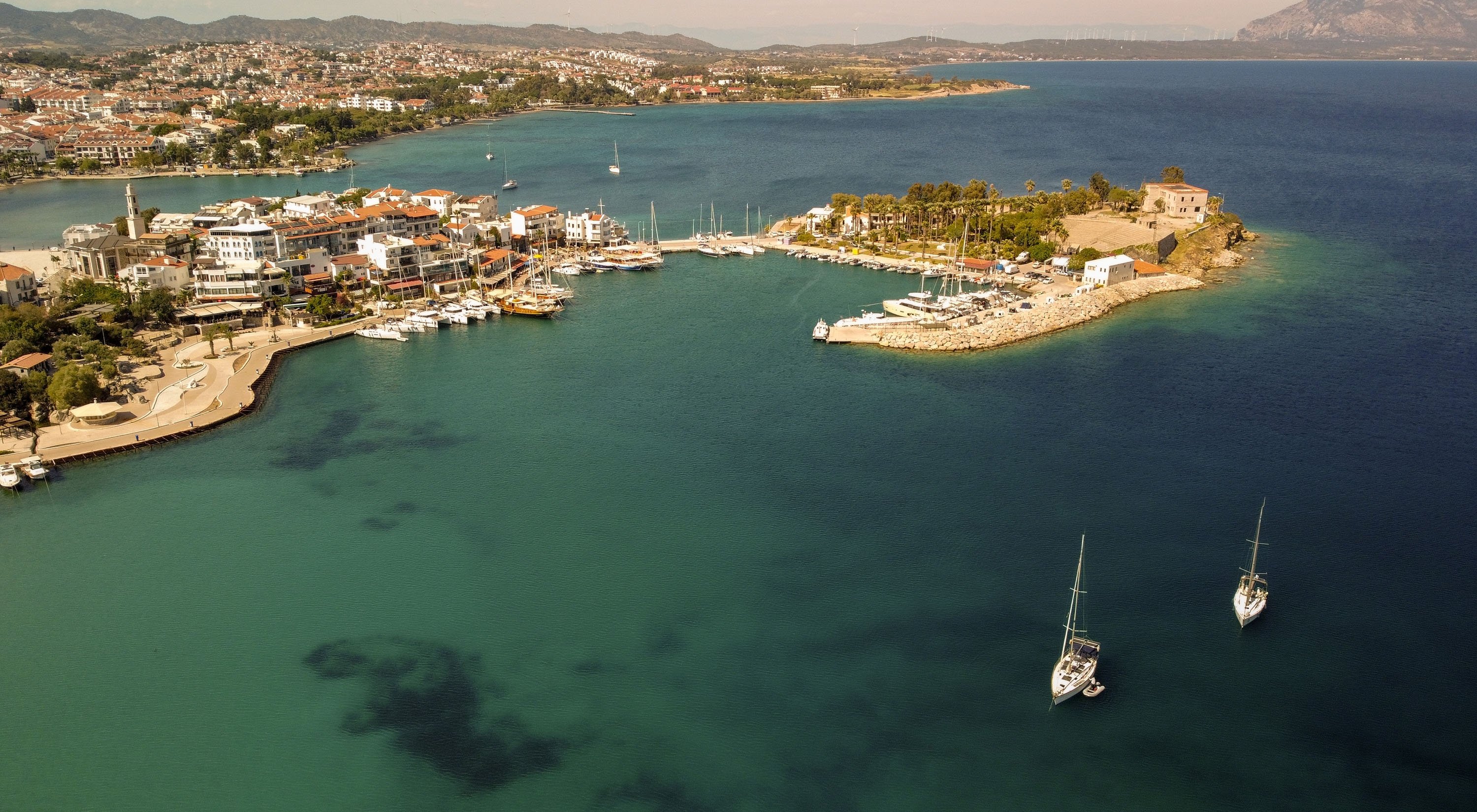© Turkuvaz Haberleşme ve Yayıncılık 2026
Datça has long been a favorite retirement destination for many urban Turks predominantly from Istanbul and Ankara, however, the residential profile has changed quite dramatically since the pandemic, when this town became a prime spot for a new wave of younger urban professionals that are able to work remotely. Since then, the demand for housing, rentals or purchases has like many destinations dotting Türkiye’s coast quadrupled, to say the least. While Datça was already saturated with summer vacationers, who either have summer residences or vacation there, the newer and younger population has resulted in the opening of several coffee shops, cafes and modern restaurants to cater to them, making it also a livelier winter destination than many of the country’s coastal towns.
Datça is special for its spectacular mountainous and sea landscape, its slow-paced pace of life, its neighborly and small-town vibes, a wide variety of cafes and restaurants and the Datçacookie made from the almonds the peninsula is famed for, which is also the subject a spring festival is centered on, namely the Datça Badem Çiçeği Festivalı (Datça Almond Blossom Festival), which takes place annually in February.
The whole town comes to life for this event, which has live musical performances, gift stands, nature hikes and rock-climbing sessions. In summer the peak season is short-lived and Datça is a less traveled town for many foreigners, simply because of its positioning at the end of a long peninsula. This makes the region harder to navigate without a car and quite an extra ways’ distance from the two airports: Bodrum and Dalaman.

I digress but wanted to share my attempt to move to Datça a few years back just before the pandemic but finding affordable accommodation and the sheer distance of the town from other areas on the peninsula dissuaded me at the time and I ended up moving on to Gökova. Yet, the draw of the town and the entire peninsula remains in my mind as a possibility for a perfect year-round place to live.
Datça is farther from the other highlights along Türkiye’s coast, namely Bodrum, Marmaris, Dalyan, Fethiye and of course, Antalya. While serviced by a ferry that departs from the marina at the Bodrum Castle twice daily in summer, in winter that is not the case. Not only are ferry services spaced out in winter to just a few days a week, but the weather can also interrupt services as the boats don’t run in stormy weather. Having to wait for the ferry to resume services for four days was integral to my opting out of moving there.
But this shouldn’t be a deterrence in summer as they certainly run more regularly. It is a spectacular boat ride, and one you can also take your vehicle aboard, albeit don’t be surprised as the prices are steep for the trip. These days the cost to go with a car rounds up to around TL 1,000 ($42.50).
While the boat ride from Bodrum is 105 minutes long, to drive from the Bodrum peninsula to Datça takes upward of four hours. First, one needs to drive a road that parallels Marmaris and then continue on to a hilly and windy road for another hour. Don’t get me wrong though as the views from the road and on the boat are both equally spectacular because Datça is nearly completely surrounded by water but also has an extremely mountainous landscape, which also makes it a popular spot for rock climbing.
Contrary to what one might expect, the ferry from Bodrum does not land in the center of Datça, nor anywhere close. In fact, it is about a 15-minute drive into the center of town, where people go to socialize, whether it be heading to the farmers market, enjoying a meal or gourmet coffee by the sea or eating at any of the local vendors, which these days includes pizzas, burgers, home cooking and other vegan options. The center of Datça is easy to navigate and there is a sandy beach lined with fish restaurants and some serving international cuisine and shops and all necessities lining paralleled streets. The city center mainly has apartments and two to three-story buildings also serving as hotels.
Eski Datça is a neighborhood a short drive inland from the center of town that is famed for its original stone houses and cobblestone streets that have been renovated into a boutique village where you can while away the day sipping on coffee and tea or lunch and sweets. Perhaps the most tourist spot of Datça, as almost everyone who visits the region also wants to walk down the windy streets, is where Turkish poet Can Yücel once lived. Knidos is an ancient Carian town with ruins that connect to the sea and is located on the western and southernmost tip of the island-like peninsula. While well worth a visit, especially because of its amphitheater, columns and archways all with dramatic views of the surrounding sea it needs a car or a venture with an organized bus or boat tour.
For most, a visit to Datça is all about spending time in the “büküs," which is the ending given to the name of three different spots on the Datça peninsula. You see “bükü,” which translates into "waterside thicket,” refers to being a slice of nature by the sea. Well, in Datça there are three such areas that have become predominant vacation spots, namely Palamutbükü, Ovabükü and Hayıtbükü, with several smaller “büküs” in between. These are all seaside neighborhoods with expansive beaches and fish restaurants and cafes lining the shore. The color of the sea, the vista of an uninterrupted horizon and the pleasant breeze truly make one understand the significance of being at this one particular place in the world. These are places where time seems to stand still and everyone who visits does so to simply relax, take in the spectacular nature and enjoy the moment.
